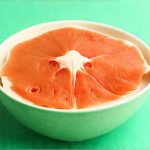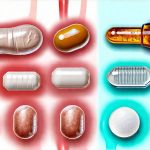Living with a sensitive bladder – often associated with conditions like interstitial cystitis (IC) or overactive bladder (OAB) – can be significantly impacted by diet. What seems harmless to most individuals can trigger intense discomfort, urgency, and pain for those with these sensitivities. Understanding the connection between food and bladder health is crucial for managing symptoms and improving quality of life. It’s not a one-size-fits-all situation; triggers vary widely from person to person, making dietary exploration a deeply personal journey. Many individuals find relief by identifying and eliminating specific foods that exacerbate their symptoms, while others benefit from a more cautious introduction and reintroduction process to pinpoint individual sensitivities.
The challenge lies in the often delayed nature of these reactions. Unlike food allergies which usually result in immediate responses, bladder irritation can manifest hours or even days after consumption, making it difficult to connect cause and effect. This article explores common foods linked to bladder flare-ups, provides insights into why they might cause issues, and offers strategies for identifying your personal triggers. It’s important to remember that this information is not a substitute for professional medical advice; consulting with a healthcare provider or registered dietitian specializing in pelvic health is essential for personalized guidance.
Common Culprits: Foods Often Linked to Bladder Irritation
Many foods contain compounds that can irritate the bladder lining, leading to increased urgency, frequency, and pain. These aren’t necessarily “bad” foods; they’re simply more likely to cause problems for individuals with sensitive bladders. Acidity plays a major role in many cases, as does the presence of certain chemicals or compounds that can directly impact bladder function. It’s important to note that tolerance levels differ greatly – what bothers one person may not affect another. A systematic approach to dietary changes is therefore crucial for effective management.
One category consistently implicated in bladder flare-ups are citrus fruits and juices. While rich in Vitamin C, the high acidity can be very irritating to a sensitive bladder lining. Tomatoes, too, fall into this category – even though botanically a fruit, they’re often treated as vegetables and used extensively in cooking. Other acidic foods like vinegar-based dressings or pickled items can also contribute to symptoms. Caffeine is another well-known irritant; it’s a diuretic (promoting fluid loss) which concentrates urine, potentially irritating the bladder wall, and can also increase urgency. Alcoholic beverages, especially beer and wine, often have similar effects due to their dehydrating nature and potential for containing histamine or other compounds that can trigger inflammation.
Finally, artificial sweeteners are increasingly recognized as potential bladder irritants. While marketed as healthier alternatives to sugar, some individuals report significant symptom flares after consuming products containing aspartame, saccharin, or sucralose. This is thought to be due to their impact on gut health and the subsequent release of inflammatory compounds. Identifying these common culprits can provide a starting point for dietary modifications, but individual sensitivity testing and careful observation remain paramount. If you are experiencing recurring issues, it may be helpful to explore what to do after UTI symptoms return.
The Role of Specific Food Components & Gut Health
Beyond whole foods, it’s important to understand that specific components within food can contribute to bladder irritation. Histamine, a compound found in fermented foods, aged cheeses, smoked meats, and even some vegetables like spinach and eggplant, is a prime example. Individuals with histamine intolerance may experience increased bladder symptoms after consuming these items. Similarly, salicylates – naturally occurring compounds in many fruits, vegetables, and spices – can cause reactions in sensitive individuals. These reactions aren’t necessarily allergies but rather sensitivities that manifest as inflammation or irritation.
The connection between gut health and bladder health is becoming increasingly recognized. A disrupted microbiome (an imbalance of bacteria in the gut) can lead to increased intestinal permeability, often referred to as “leaky gut.” This allows undigested food particles and toxins to enter the bloodstream, triggering systemic inflammation that can exacerbate bladder symptoms. Foods that promote a healthy gut – like fiber-rich vegetables, fermented foods (if tolerated), and probiotics – may help reduce inflammation and improve bladder function. Conversely, processed foods, high-sugar diets, and excessive alcohol consumption can disrupt gut health and worsen bladder issues. Understanding hydration in UTI recovery is also important for overall health.
Crucially, dietary changes should be made thoughtfully and gradually to avoid overwhelming the system. Sudden elimination of entire food groups can lead to nutrient deficiencies or unnecessary restrictions. A food diary, meticulously tracking both intake and symptom severity, is an invaluable tool for identifying personal triggers and tailoring a sustainable dietary plan.
Identifying Your Personal Triggers: A Step-by-Step Approach
The key to managing diet related bladder flare-ups isn’t necessarily eliminating everything potentially irritating but figuring out what specifically affects you. Here’s a structured approach to identify your individual food sensitivities:
- Keep a Detailed Food Diary: For at least 2-3 weeks, record everything you eat and drink, including portion sizes, preparation methods (e.g., fried, steamed), and any additives or ingredients. Simultaneously track your bladder symptoms – frequency, urgency, pain levels (on a scale of 1-10), and any associated discomfort. Be specific!
- Elimination Diet: Once you have sufficient data from the food diary, consider an elimination diet under the guidance of a healthcare professional. This involves removing suspected trigger foods for a period of time (typically 2-4 weeks) to see if symptoms improve. Common foods to eliminate initially include citrus fruits, tomatoes, caffeine, alcohol, artificial sweeteners, spicy foods, and carbonated beverages.
- Reintroduction Phase: After the elimination phase, gradually reintroduce one food at a time, observing for any symptom flares over 2-3 days. If a flare occurs, that food is likely a trigger and should be avoided or limited. It’s important to reintroduce foods individually so you can clearly identify which ones are causing problems. Consider if stress causes urinary flare-ups as well, since stress can affect bladder health.
The Importance of Hydration & Fiber Intake
Adequate hydration is paramount for bladder health, even – and especially – when experiencing sensitivity. Dehydration concentrates urine, making it more irritating to the bladder lining. Aiming for 6-8 glasses of water per day (adjust based on activity level and climate) can help dilute urine and reduce irritation. However, avoid drinking large amounts of fluid at once, as this can also increase urgency. Sipping throughout the day is generally preferable.
Fiber plays a crucial role in regulating bowel movements, which directly impacts bladder function. Constipation can put pressure on the bladder, exacerbating symptoms. A diet rich in fiber – from sources like vegetables, fruits (tolerated ones!), and whole grains – promotes regular bowel movements and reduces this pressure. However, it’s important to increase fiber intake gradually to avoid bloating or gas, which can also be irritating.
Beyond Food: Other Lifestyle Factors & Considerations
While dietary modifications are crucial, it’s essential to remember that bladder health is influenced by a multitude of factors beyond food. Stress management techniques – such as yoga, meditation, or deep breathing exercises – can help reduce muscle tension and alleviate bladder symptoms. Pelvic floor exercises (Kegels) can strengthen the muscles supporting the bladder and urethra, improving control and reducing urgency.
Avoid smoking, as tobacco smoke is a known bladder irritant. Limit your intake of carbonated beverages, which can also contribute to irritation. Wearing loose-fitting clothing avoids putting extra pressure on the bladder area. Finally, remember that patience and self-compassion are vital. Identifying dietary triggers and managing bladder sensitivity is an ongoing process that requires consistent effort and a willingness to adjust strategies as needed. Consulting with a healthcare professional specializing in pelvic health is the best way to develop a personalized plan tailored to your specific needs and circumstances. It’s also important to be aware of early signs of urethritis if you suspect an infection.





















